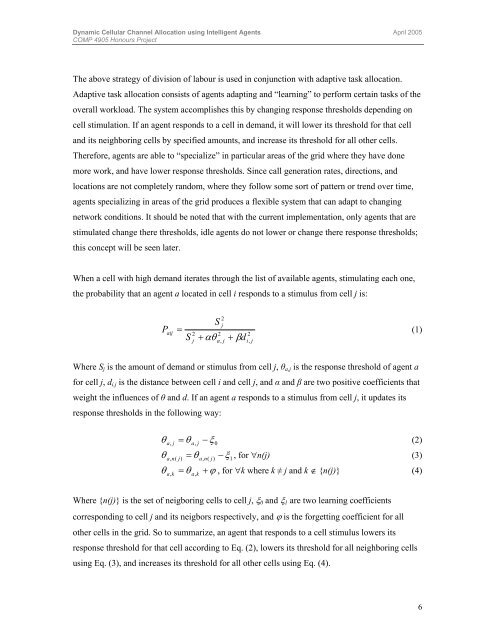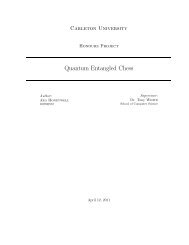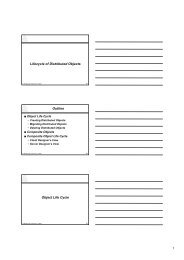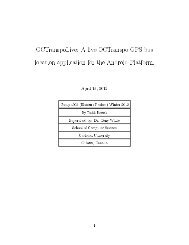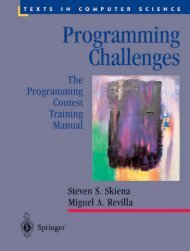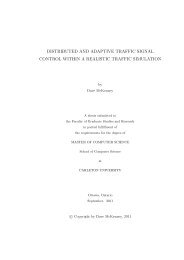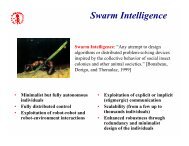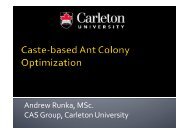Gayan Abeysundara - Complex Adaptive Systems Group
Gayan Abeysundara - Complex Adaptive Systems Group
Gayan Abeysundara - Complex Adaptive Systems Group
Create successful ePaper yourself
Turn your PDF publications into a flip-book with our unique Google optimized e-Paper software.
Dynamic Cellular Channel Allocation using Intelligent Agents April 2005COMP 4905 Honours ProjectThe above strategy of division of labour is used in conjunction with adaptive task allocation.<strong>Adaptive</strong> task allocation consists of agents adapting and “learning” to perform certain tasks of theoverall workload. The system accomplishes this by changing response thresholds depending oncell stimulation. If an agent responds to a cell in demand, it will lower its threshold for that celland its neighboring cells by specified amounts, and increase its threshold for all other cells.Therefore, agents are able to “specialize” in particular areas of the grid where they have donemore work, and have lower response thresholds. Since call generation rates, directions, andlocations are not completely random, where they follow some sort of pattern or trend over time,agents specializing in areas of the grid produces a flexible system that can adapt to changingnetwork conditions. It should be noted that with the current implementation, only agents that arestimulated change there thresholds, idle agents do not lower or change there response thresholds;this concept will be seen later.When a cell with high demand iterates through the list of available agents, stimulating each one,the probability that an agent a located in cell i responds to a stimulus from cell j is:Paij2Sj= (1)S +αθ + βd2j2a,j2i,jWhere S j is the amount of demand or stimulus from cell j, θ a,j is the response threshold of agent afor cell j, d i,j is the distance between cell i and cell j, and α and β are two positive coefficients thatweight the influences of θ and d. If an agent a responds to a stimulus from cell j, it updates itsresponse thresholds in the following way:θa , j= θa,j− ξ0(2)θa , n(j)= θa,n(j)−ξ1, for ∀n(j) (3)θa , k= θa,k+ ϕ , for ∀k where k ≠ j and k ∉ {n(j)} (4)Where {n(j)} is the set of neigboring cells to cell j, ξ 0 and ξ 1 are two learning coefficientscorresponding to cell j and its neigbors respectively, and ϕ is the forgetting coefficient for allother cells in the grid. So to summarize, an agent that responds to a cell stimulus lowers itsresponse threshold for that cell according to Eq. (2), lowers its threshold for all neighboring cellsusing Eq. (3), and increases its threshold for all other cells using Eq. (4).6


